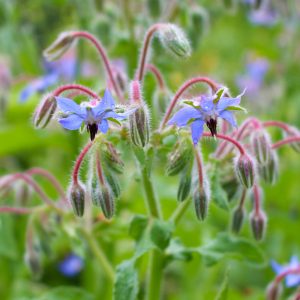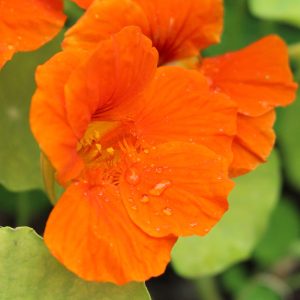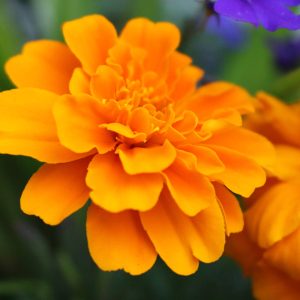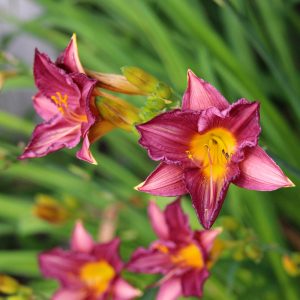Flowers are more than just the beautiful beds, colorful borders, or attractive containers that make up your garden and landscape. Edible flowers can also be surprising and delicious accents to a wide variety of tasty dishes. But which flowers are safe to eat, and how can you add blooms to your culinary creations?
Edible Flower Safety
Before consuming any flowers, it is essential that you properly verify the bloom’s identity. Some flowers can look very similar to one another, and though they may look alike, each bloom isn’t necessarily safe to eat. If you cannot be positive about the flower’s identity, it is safest to skip the snack and simply enjoy the flower’s beauty instead of its taste.
Identifying flowers is easier if you only use blooms you have grown yourself from a reliable source.
Choose only organically grown flowers for edible delights, avoiding blooms that may have been treated with pesticides, insecticides, or other chemicals. As with identification, this is easiest to do if you’ve grown the flowers yourself and know exactly how they’ve been cultivated. When harvesting blooms for cooking and eating, use clean pruners or clippers reserved just for edible flowers to prevent any cross-contamination from other plants in your garden. Choose only the healthiest blooms, without any signs of spotting, pests, and disease.
Before eating any flowers, wash them carefully in fresh, clean water and allow them to air dry. It is safest to only eat the petals of flowers, which is where the best flavor will be concentrated unless you know for certain that other parts of the plant are edible.
Delicious Edible Flowers to Try
Many familiar flower varieties are edible. The most popular and tastiest options include…
- Allium – These colorful blooms have a mild oniony flavor that goes well with savory dishes but take care not to use too much or the taste can be overwhelming.
- Borage – Both the blooms and leaves of borage are edible and have a mild cucumber-like flavor that can pair well with a variety of recipes and dishes.
- Dandelion – More often considered a weed than a desirable flower, dandelions have a sweet, honey-like taste when young, but grow bitter as the blooms mature.
- Daylily – While the white base of these flowers is strongly bitter, the rest of the petals have a mild vegetal taste similar to asparagus or zucchini.
- Hibiscus – A compelling combination of tart and sweet, hibiscus has a tantalizing flavor similar to cranberries. Some blooms also have citrus notes.
- Lavender – A potent flavoring choice, lavender gives dishes a floral note with hints reminiscent of rosemary or mint. This flower should be used sparingly as it could overpower a dish.
- Marigold – A range of tastes are found in marigolds, from peppery to tangy to spicy. Experiment with different cultivars to find your favorite flavor.
- Nasturtium – All parts of nasturtiums are edible, and they impart a peppery or spicy flavor to dishes, similar to radishes.
- Rose – Rose flavors vary based on the cultivar, soil conditions, and care. Flavors range from sweet or spicy notes to fruity tones similar to strawberries or green apples.
- Sorrel – These blooms have a very strong, lemony flavor that adds a punch of citrus to any dish but can easily become overwhelming. Use sorrel sparingly for the best effect.
- Violet – Along with pansies and violas, these flowers have a sweeter taste with grassy notes and may have a somewhat mint-like flavor as well.
Tips for Using Edible Flowers
No matter which tastes you prefer, there are many different ways to incorporate edible flowers into your favorite dishes. More savory tastes, such as flowers with spicy, peppery, or vegetable-like notes, can be great in salads, sauces, and stews, either incorporated into the dish or used as a finishing garnish. Some potent tastes are also delicious when infused into drinks, such as adding flowers to tea, lemonade, or even champagne for a unique flavor. Flower petals can even be frozen in ice cubes for a whimsical accent.
For more floral or fruity flavors, flowers can be delicious garnishes for salads, cakes, and cookies. Petals can be sprinkled over desserts, or whole blooms or larger petals can be sugared for a glittering accent on a decadent treat. A single flower makes a beautiful statement on a cupcake or can be a tasty accent on a mousse, sherbet, or sorbet.
When you first start trying edible flowers, use them sparingly until you are accustomed to their flavors and can adjust your recipes to your tastes. It’s easy to enjoy delicious blooms in all your favorite recipes, bringing beauty to the plate and palate just as flowers can bring beauty to your landscape.









